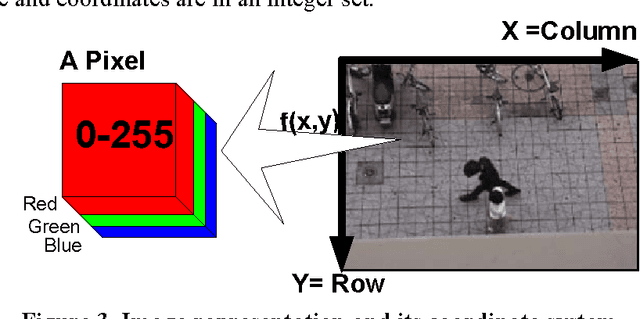Yasushi Takeyama
Determination of Pedestrian Flow Performance Based on Video Tracking and Microscopic Simulations
Sep 08, 2016


Abstract:One of the objectives of understanding pedestrian behavior is to predict the effect of proposed changes in the design or evaluation of pedestrian facilities. We want to know the impact to the user of the facilities, as the design of the facilities change. That impact was traditionally evaluated by level of service standards. Another design criterion to measure the impact of design change is measured by the pedestrian flow performance index. This paper describes the determination of pedestrian flow performance based video tracking or any microscopic pedestrian simulation models. Most of pedestrian researches have been done on a macroscopic level, which is an aggregation of all pedestrian movement in pedestrian areas into flow, average speed and area module. Macroscopic level, however, does not consider the interaction between pedestrians. It is also not well suited for prediction of pedestrian flow performance in pedestrian areas or in buildings with some obstruction, that reduces the effective width of the walkways. On the other hand, the microscopic level has a more general usage and considers detail in the design. More efficient pedestrian flow can even be reached with less space. Those results have rejected the linearity assumption of space and flow in the macroscopic level.
Tracking System to Automate Data Collection of Microscopic Pedestrian Traffic Flow
Sep 07, 2016



Abstract:To deal with many pedestrian data, automatic data collection is needed. This paper describes how to automate the microscopic pedestrian flow data collection from video files. The study is restricted only to pedestrians without considering vehicular - pedestrian interaction. Pedestrian tracking system consists of three sub-systems, which calculates the image processing, object tracking and traffic flow variables. The system receives input of stacks of images and parameters. The first sub-system performs Image Processing analysis while the second sub-system carries out the tracking of pedestrians by matching the features and tracing the pedestrian numbers frame by frame. The last sub-system deals with a NTXY database to calculate the pedestrian traffic-flow characteristic such as flow rate, speed and area module. Comparison with manual data collection method confirmed that the procedures described have significant potential to automate the data collection of both microscopic and macroscopic pedestrian flow variables.
Tracking Algorithm for Microscopic Flow Data Collection
Sep 07, 2016Abstract:Various methods to automate traffic data collection have recently been developed by many researchers. A macroscopic data collection through image processing has been proposed. For microscopic traffic flow data, such as individual speed and time or distance headway, tracking of individual movement is needed. The tracking algorithms for pedestrian or vehicle have been developed to trace the movement of one or two pedestrians based on sign pattern, and feature detection. No research has been done to track many pedestrians or vehicles at once. This paper describes a new and fast algorithm to track the movement of many individual vehicles or pedestrians
 Add to Chrome
Add to Chrome Add to Firefox
Add to Firefox Add to Edge
Add to Edge